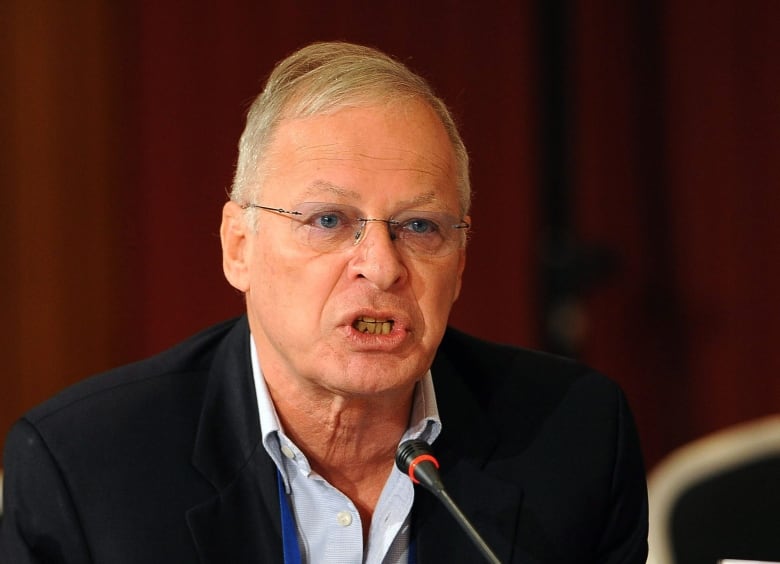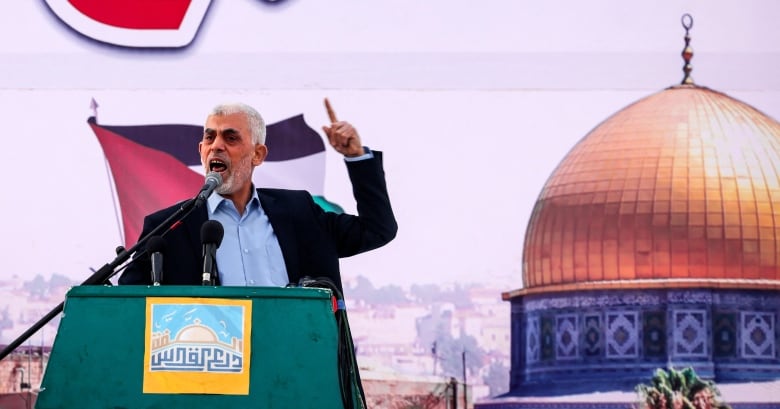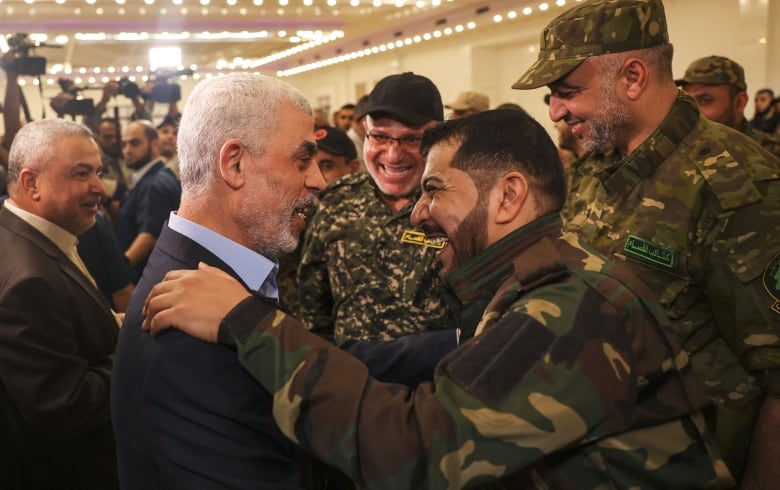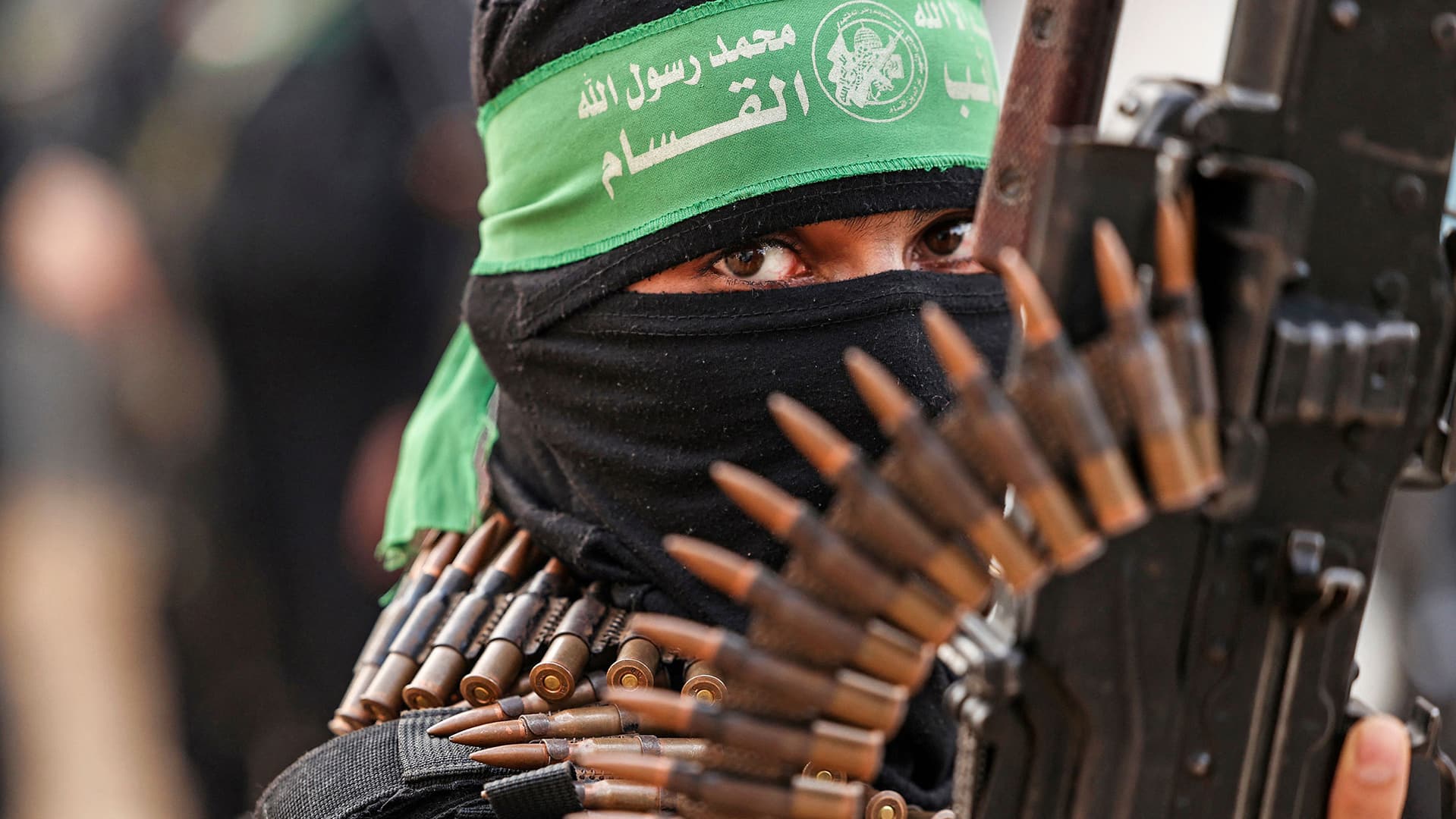WARNING: This story contains graphic details
Decades before Yahya Sinwar became the political leader of Hamas in Gaza, Israeli journalist and author Ehud Yaari sat down with him over hummus in an Israeli prison in the Negev desert. He describes Sinwar, who conversed in fluent Hebrew, as a curious but cunning Islamist, bent upon the destruction of the state of Israel.
“He is not somebody who’s thinking about negotiations, a two-state solution — that’s not Sinwar,” said Yaari, who interviewed Sinwar in prison four times between 1993 and 2001.
“He was very clear that the state of Israel should be destroyed, and the Jews cannot be a part of a Palestinian state.
“He was willing to make an exception of me — jokingly,” said Yaari, who is now a fellow of the Washington Institute for Near East Policy.

A founding member of Hamas
Described by Israeli officials as the architect of the Oct. 7 attacks that killed 1,200, Sinwar, 61, was a founding member of Hamas and its military wing, the Qassam Brigades.
Born in 1962 in the Khan Younis refugee camp at the southern end of the Gaza Strip, he joined Hamas when it was created in 1987 and was favoured by its founder, Sheikh Ahmed Yassin.
Yassin charged Sinwar with the creation of al-Majd, Hamas’s internal security organization, which he used to hunt down and kill those suspected of collaborating with Israel.
Once, Yaari says, Sinwar punished a suspected informer by having the man’s brother bury him alive, ordering the brother to finish the job with a spoon.
In another instance, Sinwar confessed to killing a man named Ramsi, whom he suspected of collaborating with Israelis. He told Israeli interrogators he strangled the man with a keffiyeh scarf, saying, “I wrapped him in a white shroud and closed the grave. I was sure that Ramsi knew he deserved to die.”
Featured VideoIsraeli Prime Minister Benjamin Netanyahu vowed to destroy Hamas after its latest vicious attack, but the threat is not new. CBC’s Terence McKenna breaks down why killing Hamas leaders over the years hasn’t put a dent in its power and influence.
Sinwar was convicted by an Israeli court in 1989 for the murder of 12 Palestinians he considered Israeli collaborators. He was serving four life sentences until 2011, when he was released alongside 1,026 other prisoners in exchange for captured IDF soldier Gilad Shalit.
But even while in prison, Yaari says Sinwar’s domineering personality and ruthlessness earned him a position of power as the spokesman for his fellow inmates, irrespective of whether they were members of Hamas, Fatah or another organization.
“It’s either you are for him or you are afraid of him, and then you are fine,” said Yaari, who notes that whenever Sinwar sees someone as a potential opponent, “He would kill him. No hesitation.”
After his release, Sinwar was re-integrated into the Hamas leadership, and by 2017 he was appointed the new political leader of the Gaza Strip, replacing Ismail Haniyeh, who now leads Hamas’s political bureau from Qatar. Sinwar was reappointed to the post in 2021.
Since then, he has become known for his inflammatory rhetoric.
In a warning to Israel in May 2021, shortly after the two week outbreak of violence, Sinwar said thousands of “martyrdom-seekers” would “pick up a knife to stab [an Israeli], take his car to run over one of them, or throw a Molotov cocktail that will burn your hearts” if the Al-Aqsa Mosque was harmed again, and that “multitudes of our people and nation will set out, cross the borders and swarm like a flood to uproot your entity.”
According to media reports, Hamas codenamed the Oct. 7 attacks Operation Al-Aqsa Flood.

Hostage-taking a ‘reflection’ of Sinwar
Having learned the value of the prisoner exchange that led to his own release, Joe Truzman, research analyst at the Foundation for Defense of Democracies, says Sinwar directed Hamas to take hostages as a means of freeing Palestinians from Israeli jails.
“We saw what happened on Oct. 7 and the murder of children, of elderly, of women and men, the hostage taking,” said Truzman, whose work focuses primarily on Palestinian militant groups and Hezbollah. “That is absolutely a reflection of Yahya Sinwar.”
Sinwar has previously promised to free fellow Hamas members imprisoned by Israel, and is deeply committed to this cause, says Yaari.
In 2021, he was quoted on the Qassam Brigades website as saying, “The movement seeks to free prisoners. We hope it will be urgently soon. And we promise our women in the prisons that we will carry their burdens and strive for their release. And we will soon have an appointment with freedom.”
“Since day one, he was speaking about this as his main purpose,” said Yaari. “In order to get it, you need to get hostages, and this is why they did whatever they did on Oct. 7.”
Israeli tallies say about 240 people were taken hostage by Hamas in the Oct. 7 attacks. As of Thursday, Hamas has released 97 hostages — 70 Israeli women and children and 27 foreign nationals — while about 140 remain in Gaza. In exchange, Israel freed 210 Palestinian women and teenage boys detained and imprisoned over charges ranging from stone throwing to attempted murder.
Truzman expects further exchanges to be more fraught, especially when negotiating the release of any captured IDF soldiers.
“Sinwar already knew before Oct. 7 that Israel has already released over 1,000 Palestinian prisoners for just one Israeli soldier,” said Truzman.
“The way he was thinking is that, ‘If I can get 10, 50 soldiers, I can get a lot out of the Israelis, because they’ve shown that they will do it in the past.'”

‘He doesn’t value human life’
The goal of Sinwar and other Hamas leaders is “a permanent state of war” with Israel, says Hussein Ibish, a senior resident scholar at the Arab Gulf States Institute in Washington, D.C.
“He expected what he’s getting, which is an all-out Israeli attack, which is disproportionate,” said Ibish, who has previously served as a senior fellow at the American Task Force on Palestine.
Ibish argues that Sinwar ordered the brutality of the Oct. 7 attacks to deliberately provoke Israel into “overreacting” and commit to a long-term occupation of Gaza, during which Hamas can launch a protracted insurgency.
“They have one goal in mind, almost invariably, and it is for the dominant power to be driven mad with rage and panic and fury and vengeance,” he said.
Yaari says Sinwar’s approach comes at great human cost.
“He doesn’t value human life. Not Palestinian life — certainly not Israeli life,” said Yaari.
Israel’s relentless bombardment of the Hamas-controlled Gaza Strip in response to Oct. 7 has killed over 15,000 Palestinians, 40 per cent of whom are children, according to the Gaza Health Ministry, numbers deemed reliable by the United Nations.
“For him, Gaza can be destroyed, half destroyed; you don’t measure it. As long as Hamas — bleeding, even humiliated — stands on its feet, it’s a victory” said Yaari.
Palestinians may turn on Sinwar, scholar says
Once the dust settles, Ibish says Palestinians in Gaza may one day turn on Sinwar and Hamas.
“They should never forgive Hamas for this,” said Ibish. “A lot of people in Gaza are undoubtedly going to say … ‘Why did they do that? They knew it was going to happen and they brought this on us. What did we gain? What have we lost? This is insane and they are horrendous.'”
Ibish believes this outcome is only possible if Israel leaves Gaza. If they stay, he says Palestinians will be unable to afford the intellectual and emotional space to have a debate about Hamas. Instead, their rage will remain focused on the Israelis.
“It’s going to be about surviving the depredations of Israel.”

But Sinwar may not live to answer for his actions to the Palestinian people. With Israel doggedly pursuing him and other Hamas leaders, many believe his days are numbered.
“All the authors of Oct. 7 believed they were signing their death warrant,” said Ibish. “Israel has clearly decided to kill everyone involved.”
“Doesn’t matter where he is. He could be in the bunker for a year, for two, for three,” said Yaari. “The Israelis will get him.”
But for now, Sinwar continues to direct Hamas negotiations around hostage deals, executing plans that took root decades ago in an Israeli prison.
He appears to be hiding out deep underground, while the people he leads in Gaza seek respite amid the devastation.
This post was originally published on this site be sure to check out more of their content.









